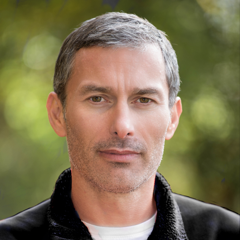New Perspectives in Natural Hazards Remote Sensing
A special issue of Remote Sensing (ISSN 2072-4292). This special issue belongs to the section "Remote Sensing in Geology, Geomorphology and Hydrology".
Deadline for manuscript submissions: 30 April 2024 | Viewed by 1217
Special Issue Editors
Interests: landslide modeling; natural and man-made hazards; spatial modeling in GIS and R; machine learning techniques; multi-hazard modeling; remote sensing applications
Special Issues, Collections and Topics in MDPI journals
Interests: soil erosion; soil geomorphology; susceptibility; remote sensing
Interests: land surface temperature; split window; air temperature; remote sensing
Interests: landslides; debris flow; susceptibility; remote sensing
Interests: desertification; soil erosion; land degradation; fluvial geomorphology; aeolian geomorphology
Interests: hyperspectral imaging; mineral exploration; remote sensing
Special Issues, Collections and Topics in MDPI journals
Special Issue Information
Dear Colleagues,
In the last decade, natural hazards such as tsunamis, volcanic eruptions, earthquakes, avalanches, cyclones or tornados, storm surges, flooding, landslides, soil erosion, land subsidence, wildfires, extreme temperatures, drought and so on have resulted in extensive loss to quality of life, critical infrastructure and economy, universally. With the underestimation of these large-scale activities, the real growth of the human population, climate change and changes to the natural landscape, the intensity and frequency of extreme natural hazards and their consequent effects are expected to enhance soon.
Technological interposition prepares crucial provisions for the prohibition and prediction of natural events. Remote sensing is among the widely used technologies that have transformed our finding of natural events, including the vast range of land processes operating on the Earth. The data created using advanced geospatial technologies named “remote sensing systems” with different spectral, temporal and spatial resolutions specially prepare prospects for varied knowledge on spatiotemporal patterns, forecasting and sustainable development goals of natural events. The collection of datasets applying earth observation systems has been worthwhile for assessing the adverse impacts of natural events, particularly with their near surface (UAVs) or near real-time potentiality for tracing extreme natural hazards. Additionally, remote sensing systems from various platforms such as the Google Earth Engine are considered as some of the main decision-making tools for making loss and damage estimations and modeling approaches for the early warning systems network. Further, advanced applications of geoinformation-based techniques such as remote sensing early warning in estimating different dimensions of natural hazards can be considered as new perspectives in natural hazards remote sensing and easily facilitate data access for modeling and monitoring natural hazards, hazard assessments and risk mapping.
Prof. Dr. Hamid Reza Pourghasemi
Dr. Narges Kariminejad
Dr. Foroogh Golkar
Dr. Soheila Pouyan
Prof. Dr. Adel Sepehr
Dr. Richard Gloaguen
Guest Editors
Manuscript Submission Information
Manuscripts should be submitted online at www.mdpi.com by registering and logging in to this website. Once you are registered, click here to go to the submission form. Manuscripts can be submitted until the deadline. All submissions that pass pre-check are peer-reviewed. Accepted papers will be published continuously in the journal (as soon as accepted) and will be listed together on the special issue website. Research articles, review articles as well as short communications are invited. For planned papers, a title and short abstract (about 100 words) can be sent to the Editorial Office for announcement on this website.
Submitted manuscripts should not have been published previously, nor be under consideration for publication elsewhere (except conference proceedings papers). All manuscripts are thoroughly refereed through a single-blind peer-review process. A guide for authors and other relevant information for submission of manuscripts is available on the Instructions for Authors page. Remote Sensing is an international peer-reviewed open access semimonthly journal published by MDPI.
Please visit the Instructions for Authors page before submitting a manuscript. The Article Processing Charge (APC) for publication in this open access journal is 2700 CHF (Swiss Francs). Submitted papers should be well formatted and use good English. Authors may use MDPI's English editing service prior to publication or during author revisions.
Keywords
- Google Earth Engine
- unmanned aerial vehicles (UAVs)
- machine learning/data mining
- remote sensing
- GIS
- multi-hazard
- spatial modeling










